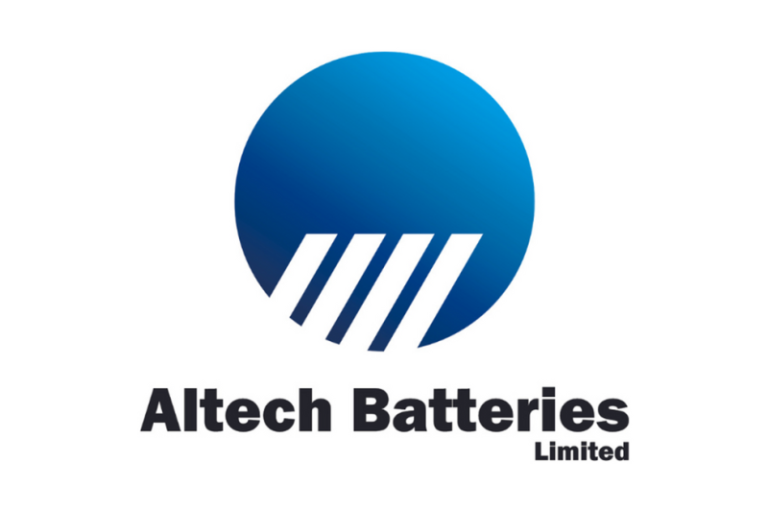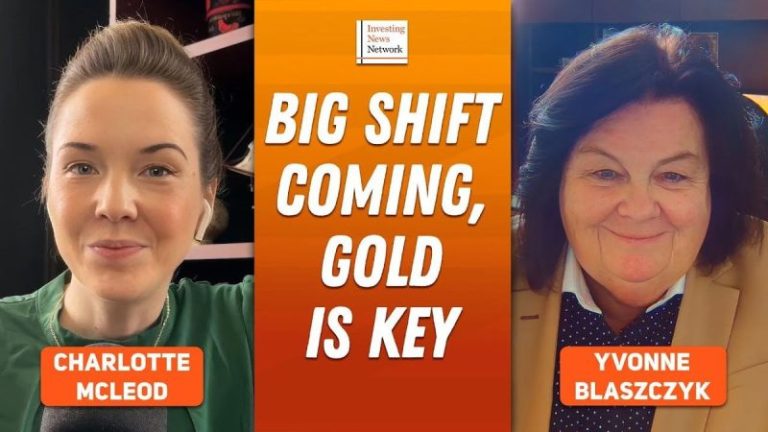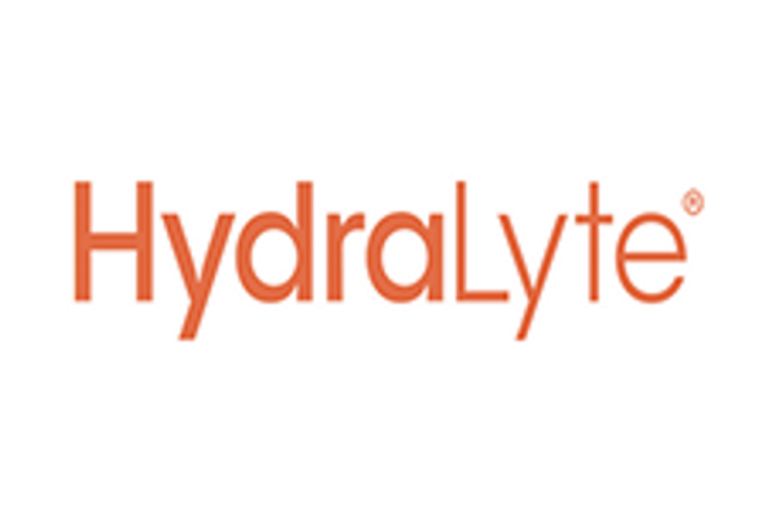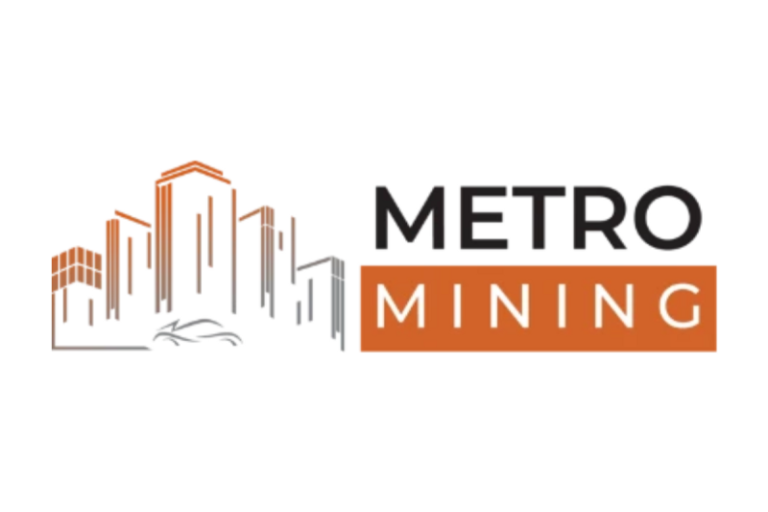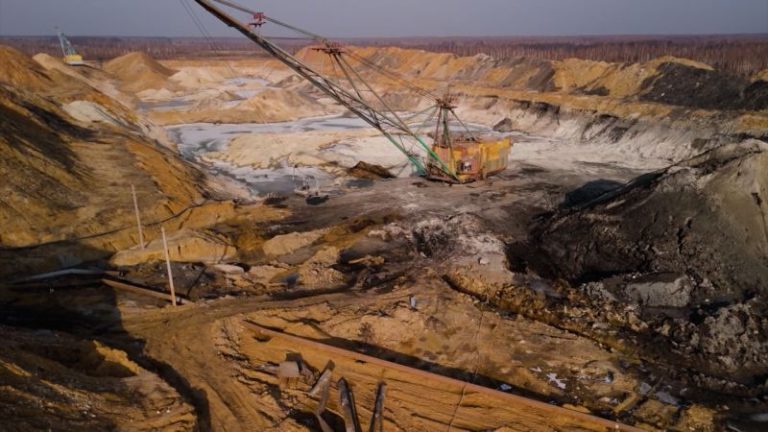Will First Majestic Silver CEO’s silver price prediction of more than US$100 per ounce come true?
The silver spot price made waves in 2020 when it rose above US$20 per ounce for the first time in four years, and the precious metal has repeatedly tested US$30 per ounce since.
Since September of 2024, silver has held above US$30, and on October 22 the silver price reached a 12-year high when it came close to breaking through the US$35 mark. While it fell back by November, the US$30 level has served as a floor.
Well-known figure Keith Neumeyer, CEO of First Majestic Silver (TSX:FR,NYSE:AG), has frequently said he believes the white metal could climb even further, to hit the US$100 mark or even reach as high as US$130 per ounce.
Neumeyer has voiced this opinion often in recent years. He put up a US$130 price target in a November 2017 interview with Palisade Radio, and he also discussed it in an August 2022 interview with Wall Street Silver. He has reiterated his triple-digit silver price forecast in multiple interviews with Kitco over the years, as recently as March 2023.
In 2024, Neumeyer has made his US$100 call in a conversation with ITM Trading’s Daniela Cambone at the Prospectors & Developers Association of Canada (PDAC) convention; and in April he acknowledged his reputation as the ‘triple-digit silver guy’ on the Todd Ault Podcast.
He believes silver could hit US$100 due to a variety of factors, including its consistent deficit, its industrial demand and how undervalued it is compared to gold.
At times he’s been even bolder, suggesting in 2016 that silver could reach US$1,000 if gold were to hit US$10,000. More recently, his expected timeline for US$100 silver has been pushed back, but he remains very bullish on the metal in the long term.
In order to better understand where Neumeyer’s opinion comes from and whether a triple-digit silver price is really in the cards, it’s important to take a look at the factors that affect the metal’s movements, as well as where prices have been in the past and where other industry insiders think silver could be headed. First, let’s dive a little deeper into Neumeyer’s US$100 prediction.
Why is Neumeyer calling for a US$100 silver price?
There’s a significant distance for silver to go before it reaches the success Neumeyer has boldly predicted. In fact, in order for the precious metal to jump to the US$100 mark, its price would have to increase from its current value by around 350 percent.
Neumeyer has previously stated that he expects a triple-digit silver price in part because he believed the market cycle could be compared to the year 2000, when investors were sailing high on the dot-com bubble and the mining sector was down. He thinks it’s only a matter of time before the market corrects, like it did in 2001 and 2002, and commodities see a big rebound in pricing. It was during 2000 that Neumeyer himself invested heavily in mining stocks and came out on top.
“I’ve been calling for triple-digit silver for a few years now, and I’m more enthused now,” Neumeyer said at an event in January 2020, noting that there are multiple factors behind his reasoning. “But I’m cautiously enthused because, you know, I thought it would have happened sooner than it currently is happening.”
In his August 2022 with Wall Street Silver, he reiterated his support for triple-digit silver and said he’s fortunately not alone in this optimistic view — in fact, he’s been surpassed in that optimism. ‘I actually saw someone the other day call for US$500 silver,’ he said. ‘I’m not quite sure I’m at the level. Give me US$50 first and we’ll see what happens after that.’
Another factor driving Neumeyer’s position is his belief that the silver market is in a deficit. In a May 2021 interview, when presented with supply-side data from the Silver Institute indicating the biggest surplus in silver market history, Neumeyer was blunt in his skepticism. “I think these numbers are made up,” he said. “I wouldn’t trust them at all.”
He pointed out that subtracting net investments in silver exchange-traded products leaves the market in a deficit, and also questioned the methodology behind the institute’s recycling data given that most recycled silver metal comes from privately owned smelters and refineries that typically don’t make those figures public.
‘I’m guessing the mining sector produced something in the order of 800, maybe 825 million ounces in 2022,’ Neumeyer said when giving a Q4 2022 overview for his company. ‘Consumption numbers look like they’re somewhere between 1.2 and 1.4 billion ounces. That’s due to all the great technologies, all the newfangled gadgets that we’re consuming. Electric vehicles, solar panels, windmills, you name it. All these technologies require silver … that’s a pretty big (supply) deficit.’
In a December 2023 interview with Kitco, Neumeyer stressed that silver is more than just a poor man’s gold and he spoke to silver’s important role in electric vehicles and solar cells.
In line with its view on silver, First Majestic is a member of a consortium of silver producers that in January 2024 sent a letter to the Canadian government urging that silver be recognized as a critical mineral. Silver’s inclusion on the list would allow silver producers to accelerate the development of strategic projects with financial and administrative assistance from the Canadian government. Canada’s critical minerals list is expected to get an update in the summer of 2024.
In his 2024 PDAC interview, Neumeyer once again highlighted this sizable imbalance in the silver’s supply-demand picture. “We’re six years into this deficit. The deficit in 2024 looks like it’s gonna be bigger than 2023, and why is that? Because miners aren’t producing enough silver for the needs of the human race,” he said.
More controversially, Neumeyer is of the opinion that the white metal will eventually become uncoupled from its sister metal gold, and should be seen as a strategic metal due to its necessity in many everyday appliances, from computers to electronics, as well as the technologies mentioned above. He has also stated that silver production has gone down in recent years, meaning that contrary to popular belief, he believes the metal is actually a rare commodity.
Neumeyer’s March 2023 triple-digit silver call is a long-term call, and he explained that while he believes gold will break US$3,000 this year, he thinks silver will only reach US$30 in 2023. However, once the gold/silver ratio is that unbalanced, he believes that silver will begin to take off, and it will just need a catalyst.
‘It could be Elon Musk taking a position in the silver space,’ Neumeyer said. ‘There’s going to be a catalyst at some time, and headlines in the Wall Street Journal might talk about the silver supply deficit … I don’t know what the catalyst will be, but investors and institutions will wake up to the fundamentals of the metal, and that’s when it will start to move.’
In an August 2023 interview with SilverNews, Neumeyer discussed his belief that banks are holding the silver market down. He pointed to the paper market for the metal, which he said the banks have capped at US$30 even in times of high buying.
‘If you want to go and buy 100 billion ounces of silver (in the paper market), you might not even move the price because some bank just writes you a contract that says (you own that),’ he explained, saying banks are willing to get short, because once the buying stops, they push the price down to get the investors out of the market and buy the silver back. ‘… If the miners started pulling their metal out of the current system, then all of a sudden the banks wouldn’t know if they’re going to get the metal or not, so they wouldn’t be taking the same risks they’re taking today in the paper markets.’
The month after the interview, his company First Majestic launched its own 100 percent owned and operated minting facility, named First Mint.
In 2024, gold experienced a resurgence in investor attention as the potential for Fed rate cuts came into view. In his interview with Cambone at PDAC 2024, Neumeyer countered that perception, stating, “There’s a rush into gold because of the de-dollarization of the world. It has nothing to do with the interest rates.”
What factors affect the silver price?
In order to glean a better understanding of the precious metal’s chances of trading around the US$100 range, it’s important to examine the elements that could push it to that level or pull it further away.
The strength of the US dollar and US Federal Reserve interest rate changes are factors that will continue to affect the precious metal, as are geopolitical issues and supply and demand dynamics. Although Neumeyer believes that the ties that bind silver to gold need to be broken, the reality is that most of the same factors that shape the price of gold also move silver.
For that reason, it’s helpful to look at gold price drivers when trying to understand silver’s price action. Silver is, of course, the more volatile of the two precious metals, but nevertheless it often trades in relative tandem with gold.
Looking first at the Fed and interest rates, it’s useful to understand that higher rates are generally negative for gold and silver, while lower rates tend to be positive. That’s because when rates are higher interest shifts to products that can accrue interest.
When the COVID-19 pandemic hit, the Fed cut rates down to zero from 1 to 1.25 percent. However, rising inflation led the Fed and other central banks to hike rates, which negatively impacted gold and silver. In February 2023, the Fed raised rates by just 25 basis points, the smallest hike since March 2022, as Chair Jerome Powell said the process of disinflation has begun. The Fed continued these small rate hikes over the next year with the last in July 2023.
In this latest upward cycle of the silver market, Fed interest rate moves have played an oversized role in pumping up silver prices. In early July, as analysts factored in the rising potential for interest rate cuts in the remainder of 2024, silver prices were once again testing May’s nearly 12-year high, and they topped US$31 in September in the days leading up to the anticipated first rate cut.
While central bank actions are important for gold, and by extension silver, another key price driver lately has been geopolitical uncertainty. The past few years have been filled with major geopolitical events such as tensions between the US and other countries such as North Korea, China and Iran. More recently, the huge economic impact of the COVID-19 pandemic, Russia’s war with Ukraine, the banking crisis in early 2023 and rising tensions in the Middle East brought about by the Israel-Hamas war have been sources of concern for investors.
On a separate note, there is also a strong case to made for the metal’s industrial potential. Higher industrial demand from emerging sectors due to factors like the transition to renewable energy and the emergence of AI technology will be highly supportive for the metal over the next few years. Solar panels are an especially exciting sector as manufacturers have found increasing the silver content increases energy efficiency.
Could silver hit US$100 per ounce?
While we can’t know if we’ll reach a $100 per ounce silver price in the near future, there is support for Neumeyer’s belief that the metal is undervalued and that “ideal conditions are present for silver prices to rise.”
Many are on board with Neumeyer in the idea that silver’s prospects are bright, including Peter Krauth of Silver Stock Investor, who believes that ‘we are very likely going to experience the greatest silver bull market of our generation.’
So, if the silver price does rise further, how high will it go?
Let’s look at silver’s recent history. The highest price for silver was just under US$50 in the 1970s, and it came close to that level again in 2011. The commodity’s price uptick came on the back of very strong silver investment demand. While it has yet to reach these levels again, the silver price has increased significantly in recent years.
After spending the latter half of the 2010s in the teens, the 2020s have seen silver largely hold above US$20. In August 2020, the price of silver reached nearly US$28.50 before pulling back again, and moved back up near those heights in February 2021. The price of silver saw a 2022 high point of US$26.46 in February, and passed US$26 again in both May and November 2023.
Silver rallied in the later part of the first quarter of 2024, and by April 12 was once again flirting with the US$30 mark as it reached an 11 year high of US$29.26. Despite a brief pull back to the US$26 level, the month of May saw the silver price take another run at US$30, this time successfully pushing into US$32 territory on May 19. Silver prices experienced volatility for much of the third quarter, ranging from a high of US$31.39 on July 11 to a low of US$26.64 on August 7.
The price of silver had a nice run in late October of 2024 in the lead up to the election, rising up to US$34.80 on October 22. However, a stronger dollar and signs that the Federal reserve may not be so quick to cut interest rates as deeply as previously expected were seen as price negative for silver. The precious metal’s price was in a downward slide for much of November.
Fed Chair Jerome Powell has ‘indicated that the central bank is in no rush to lower rates, citing a strong economy, a solid labor market, and persistent inflation,’ according to Trading Economics. ‘Silver also faced additional pressure from Donald Trump’s election victory, as markets anticipated inflationary policies and a more aggressive stance toward China, which could dampen demand for the metal.’
For much of the first two months of 2025, silver followed gold higher on factors including persistent inflationary pressures brought on by Trump’s aggressive tariff announcements and the ongoing geopolitical risks in the Middle East.
As of February 20, 2025, the price of silver was around the US$33 mark, up more than 13 percent since the beginning of the year.
What do other experts think about US$100 silver?
Many experts in the space expect silver to perform strongly in the years to come, but don’t necessarily see it reaching US$100 or more, especially given the current macroeconomic conditions.
‘As I was doing my research, and this goes back over several years already, I would get to that US$300 forecast for an ultimate high in the silver price in different ways,’ he said, and broke down what a low gold/silver ratio — like we’ve seen the previous times that silver has peaked — could mean for the metal’s price in the future.
“One of the most significant (events) for me was when we saw almost the entire US Treasury yield curve peak above 5 percent in mid-October,’ he said. ‘Since then, we’ve had the US Dollar Index peak at 107. Both of these have fallen considerably since, I believe in the market’s view that the Fed has stopped hiking rates, with the expectation that rate cuts will come sometime in 2024.’
Breaking through the historic US$50 ceiling will likely happen in quick, sharp daily spikes in the modern AI trading environment, he said, and it could potentially be ‘the first step’ toward even higher silver prices, including $100 silver. ‘The key is that people really fully understand and appreciate the actual (supply) deficit of silver,’ Lin noted.
Analyst firm InvestingHaven is very bullish on silver market and is expecting prices to test all-time highs in 2025 and set new records in the next few years, even reaching as high as US$77 in 2027 and US$82 by 2030.
FAQs for silver
Can silver hit $1,000 per ounce?
In 2016, Neumeyer predicted that silver could hit $1,000 per ounce if gold ever climbed to US$10,000 per ounce. This is related to the gold to silver production ratio discussed above, which at the time of the prediction was around 1 ounce of gold to 9 ounces of silver and last year was about 1:8.3.
If silver was priced according to production ratio today, when gold is at US$2,000 silver would be around US$240, or US$222 at 1:9. However, the gold to silver pricing ratio has actually sat around 1:80 to 1:90 recently, and when gold moved above US$2,400 in May 2024, silver was around US$32. Additionally, even if pricing did change drastically to reflect production rates, gold would need to climb by more than 300 percent from its current price to hit the US$10,000 Neumeyer mentioned back in 2016.
As things are now, it seems unlikely silver will reach those highs.
Why is silver so cheap?
The primary reason that silver is sold at a significant discount to gold is supply and demand, with more silver being mined annually. While silver does have both investment and industrial demand, the global focus on gold as an investment vehicle, including countries stockpiling gold, can overshadow silver. Additionally, jewelry alone is a massive force for gold demand.
There is an abundance of silver — according to the US Geological Survey, to date 1,740,000 metric tons (MT) of silver have been discovered, while only 244,000 MT of gold have been found, a ratio of about 1 ounce of gold to 7.1 ounces of silver. In terms of output, 25,000 MT of silver were mined in 2024 compared to 3,300 MT for gold. Looking at these numbers, that puts gold and silver production at about a 1:7.5 ratio last year, while the price ratio on February 20, 2025, was around 1:89 — a huge disparity.
Is silver really undervalued?
Many experts believe that silver is undervalued at under US$30 compared to fellow currency metal gold. As discussed, their production and price ratios are currently incredibly disparate.
While investment demand is higher for gold, silver has seen increasing time in the limelight in recent years, including a 2021 silver squeeze that saw new entrants to the market join in.
Another factor that lends more intrinsic value to silver is that it’s an industrial metal as well as a precious metal. It has applications in technology and batteries — both growing sectors that will drive demand higher.
Silver’s two sides has been on display in recent years: Silver demand hit record highs in 2022, according to the Silver Institute, with physical silver investment rising by 22 percent and industrial by 5 percent over 2021. For 2023, industrial demand was up 11 percent over the previous year, compared to 28 percent decline in physical silver investment.
Is silver better than gold?
There are merits for both metals, especially as part of a well-balanced portfolio. As many analysts point out, silver has been known to outperform its sister metal gold during times of economic prosperity and expansion.
On the other hand, during economic uncertainty silver values are impacted by declines in fabrication demand.
Silver’s duality as a precious and industrial metal also provides price support. As a report from the CPM Group notes, “it can be seen that silver in fact almost always (but not always) out-performs gold during a gold bull market.”
At what price did Warren Buffet buy silver?
Warren Buffett’s Berkshire Hathaway (NYSE:BRK.A,NYSE:BRK.B) bought up 37 percent of global silver supply between 1997 and 2006. Silver ranged from US$4 to US$10 during that period.
In fact, between July 1997 and January 1998 alone, the company bought about 129 million ounces of the metal, much of which was for under US$5. Adjusted for inflation, the company’s purchases in that window cost about US$8.50 to US$11.50.
How to invest in silver?
There are a variety of ways to get into the silver market. For example, investors may choose to put their money into silver-focused stocks by buying shares of companies focused on silver mining and exploration. As a by-product metal, investors can also gain exposure to silver through some gold companies.
There are also silver exchange-traded funds that give broad exposure to silver companies and the metal itself, while more experienced traders may be interested in silver futures. And of course, for those who prefer a more tangible investment, purchasing physical bullion in silver bar and silver coin form is also an option.
Securities Disclosure: I, Melissa Pistilli, hold no direct investment interest in any company mentioned in this article.
This post appeared first on investingnews.com



